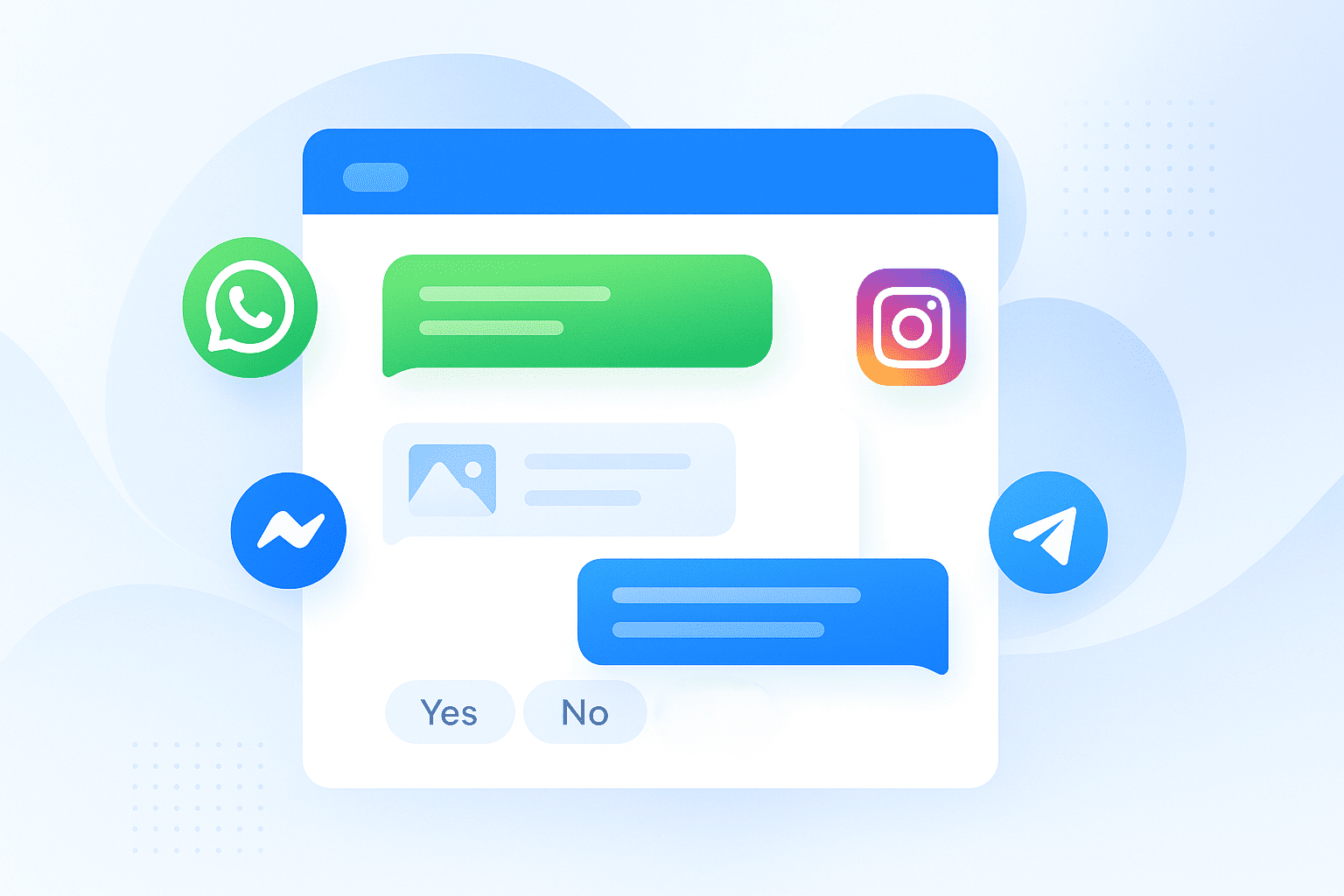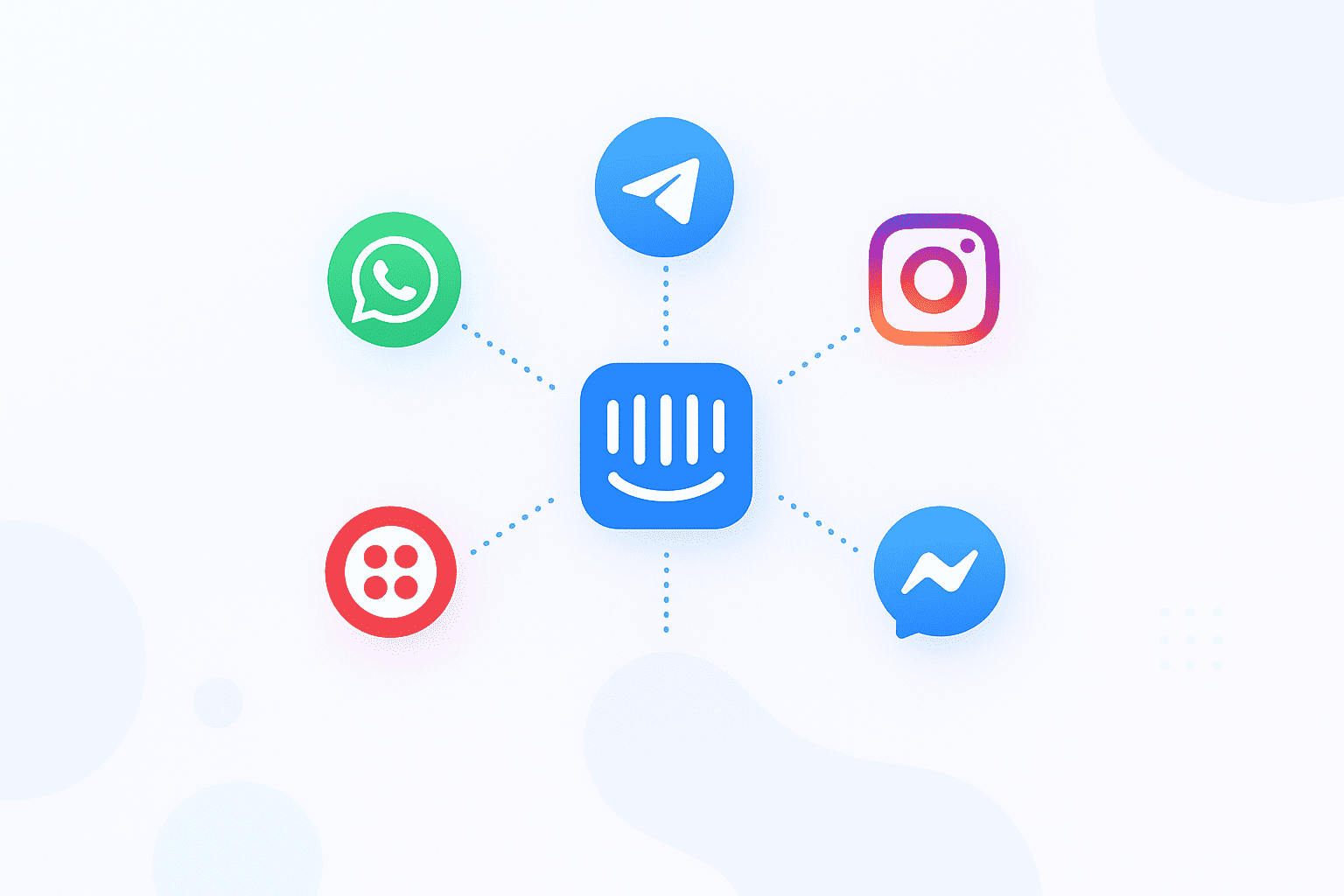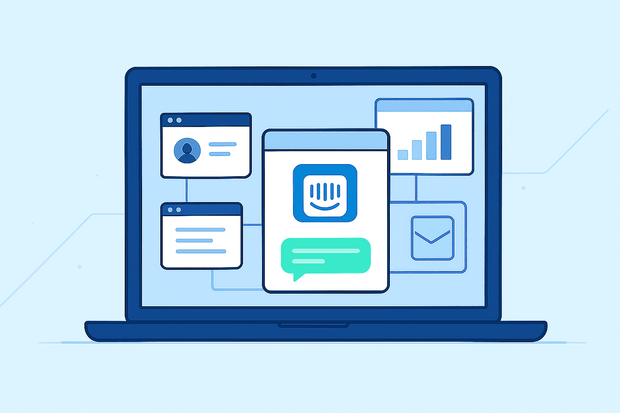Intercom is one of the most popular customer messaging platforms in the world. It is known for helping businesses engage with customers through live chat, email and in-app messages. Among all the ways businesses can use Intercom, connecting social media, SMS and messaging apps to the Intercom inbox is one of the most impactful.
Such integrations allow support and sales teams to manage customer conversations from channels like WhatsApp, Telegram, Twilio SMS, Instagram and Facebook Messenger, all within the Intercom platform.
However, when these messaging channels aren’t connected, teams often end up juggling multiple apps, losing context and duplicating work. Conversations stay scattered and compliance risks grow as the business scales.
In this guide, we cover:
- Why businesses need to integrate messaging & social media apps with Intercom
- What Intercom social messaging integrations can do for your workflow
- What are the messaging channels you can connect to Intercom
- How businesses use Intercom messaging integrations to deliver amazing customer experiences
What are Intercom social messaging integrations
Intercom messaging integrations connect your external social messaging channels like WhatsApp, Facebook Messenger, Instagram and Telegram directly to your Intercom workspace.
They allow your team to send, receive and manage all customer conversations from one shared inbox without switching between multiple apps or channels.
These key Intercom messaging integrations handle both incoming and outgoing communication and keep every conversation organized under the same customer record.

They also extend Intercom’s functionality to support channel-specific message types and experiences, so your team can communicate in ways that align with how customers naturally use each app, whether that’s through quick replies, multimedia messages or structured templates.
In simple terms, social messaging integrations make Intercom a single hub for managing all customer interactions while keeping the native experience of each messaging channel.
Why connect social messaging apps to Intercom
Connecting your messaging channels to Intercom turns it into an omnichannel customer support platform, where every conversation, customer detail and message history stays organized in one inbox. It gives your team and customers a faster, better experience across every platform.
Without these integrations, conversations get scattered across apps, CRM visibility disappears and manual work piles up, which limits how effectively your team can respond.
But, all of this can change. Here’s what you get when you connect messaging channels to your Intercom inbox:
- Unified customer view: All conversations live in one Intercom inbox, giving agents full context without switching tools.
- Faster responses: Managing every message from one place means no missed DMs or delayed replies.
- Automation and workflows: Intercom’s chatbots and rules can instantly route, tag, and handle routine questions.
- Actionable insights: Measure KPIs like CSAT, response time, and message volume across every channel to spot trends and improve performance.
Now that you know why intercom messaging integrations matter, let’s explore the main messaging apps you can connect to Intercom to improve business communication and what each one brings to your inbox.
Top messaging channels to use with intercom
While each integration allows teams to manage customer conversations from one shared inbox, each tool integration has its unique strengths. Here are some of the most popular SMS & social messaging channels that businesses connect to Intercom:

1. WhatsApp
WhatsApp is the most popular messaging app worldwide and the go-to channel for customer communication across nearly every region. Customers prefer it because it’s personal, immediate and familiar, which makes it the easiest way channel to reach out and engage with businesses in real time.
This is why it's important to have access to your WhatsApp chats within your Intercom inbox.
2. Telegram
While Telegram isn’t as big as WhatsApp, it still boasts more than 1 billion active users per month, and it has a loyal user base in regions like EMEA, CIS, and LATAM. Customers love it because it’s fast and built for real-time conversations, which makes it a key channel for customer support.
Connecting Telegram to Intercom opens your business to this audience while keeping every chat visible, organized and manageable within your inbox.
3. Twilio SMS
Research shows that 9 out 10 customers want businesses to communicate with them via text message. The Twilio SMS Intercom integration helps support teams meet those expectations and easily reach customers who prefer texts instead of chat apps, within Intercom.
4. Instagram Business
Instagram is a key customer engagement platform for e-commerce and retail brands. Customers use it to ask about products and follow up on orders. Integrating Instagram DMs with Intercom pulls every customer message into the same inbox, so your team can reply to product questions or story mentions alongside chats from other channels.
5. Facebook Messenger
Facebook Messenger is the 3rd most popular messaging app in the world. It has almost one billion active users, which makes it an extremely attractive channel for customer service. If you integrate Facebook Messenger with Intercom, you can keep all conversations in one inbox, give your team the context they need, and respond faster using Intercom features.
Common use cases for Intercom messaging integrations
When businesses integrate Intercom with messaging channels, customer service teams perform better and therefore retain more customers.
Here are some of the most common use cases for Intercom messaging:
- Customer support on Intercom: Every chat stays in one thread with full context, saved replies and chatbot support for quick answers.
- Sales follow-ups and reminders: Sales reps can automate reminders for demos, renewals or payments.
- Proactive outreach and re-engagement: Your teams can reconnect with quiet leads or customers through WhatsApp message templates sent directly from Intercom.
- Multi agent collaboration: Everyone sees the same conversation history, notes, and tags.
Need more insights on how Intercom messaging integrations work?
To sum up
Customers expect support on the channel they message you on, whether that's on WhatsApp, Instagram, Facebook or SMS. Instead of managing each app separately, connecting your messaging channels to Intercom creates one unified workspace.
Intercom messaging integrations and tools like Octopods help your team centralize communication, automate workflows and deliver faster support across every channel.
FAQs
What messaging apps integrate with Intercom?
Intercom integrates with real-time messaging apps like WhatsApp and Telegram, social channels like Facebook Messenger and Instagram and SMS tools like Twilio SMS.
How can I integrate Intercom with popular messaging apps like WhatsApp, Telegram & Instagram?
You can integrate Intercom with WhatsApp, Telegram and Instagram using either direct integrations provided by Intercom or third-party tools like Octopods. Intercom’s native integrations support WhatsApp, Facebook and Instagram DMs, but for Telegram and other channels, you need to look at 3rd party apps in the Intercom App Store.
Why do businesses connect messaging channels to Intercom?
Businesses connect messaging apps to intercom to bring all their customer conversations to one place, improve their team’s performance and provide better support across multiple channels.
What is the best way to manage all customer conversations in Intercom?
The best way to manage customer conversations in Intercom is to connect all communication channels to a single inbox, use team inboxes for visibility and deploy automations and inbox views for smoother and faster workflows. You can do this through an Intercom messaging integration tool like Octopods.

